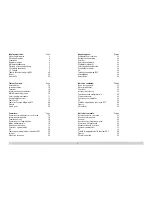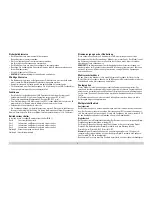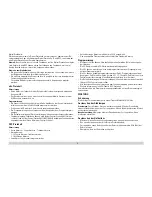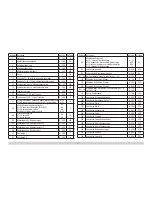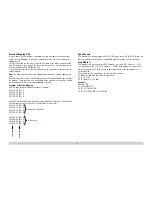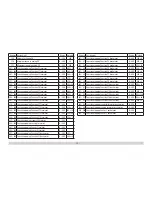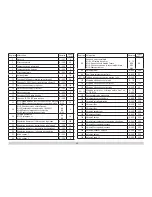
10
Safety Notes
• This model may only be used with the operating system designed for it.
• Use only switched mode power supply units and transformers that are designed
for your local power system.
• This locomotive must never be supplied with power from more than one power
pack.
• Pay close attention to the safety notes in the instructions for your operating sys
-
tem.
• Not for children under the age of 15.
•
WARNING!
Sharp edges and points required for operation.
Important Notes
• The operating instructions are a component part of the product and must therefore
be kept in a safe place as well as included with the product, if the latter is given to
someone else.
• The warranty card included with this product specifies the warranty conditions.
• Please see your authorized LGB dealer for repairs or spare parts.
• Disposing: www.maerklin.com/en/imprint.html
Functions
• This model is designed for operation on LGB two-rail DC systems with conventio
-
nal LGB DC train controllers or power packs (DC, 0 - 24 volts).
• Factory-installed multiple protocol decoder (DC, DCC, mfx).
• The model is programmed with locomotive address 03 for use with the LGB Multi
Train System (DCC). The locomotive is automatically recognized in operation with
mfx.
• Volume can be changed for the sound effects
• The functions can be activated only in parallel. Serial activation of the functions is
not possible (Please note here the instructions for your controller).
Note: Use a locomotive controller with more than 1 amp of train current for this
model.
Mode of Operation Switch
This locomotive has a 4-position mode of operation switch (Figure 1).
Pos. 0
Locomotive stopped without current
Pos. 1
Locomotive motors and lighting are turned on
Pos. 2
Locomotive motors and lighting are turned on
Pos. 3
Locomotive motors and lighting are turned on
Setting U: Current from the rails
Setting O: Catenary operation
Power Supply from the Catenary
This locomotive can get its power from the LGB catenary (see modes of operation).
There is a red dot on the underside of the model. Place the model on the rails so that
the red dot is pointing at the rail that is not connected to the catenary power pack.
CAUTION!
Catenary may be supplied with current only in analog operation. In digital
operation, the locomotive may only receive current from the rails, since otherwise
dangerous voltage levels may be generated.
Multi-Purpose Socket
There are multi-purpose sockets suitable for flat connectors on the front walls (Fig. 2).
This socket can be used to provide track power to LGB cars with lighting or sound
electronics.
Pantographs
This model is equipped with electronically controlled pantographs. The rear pan-
tograph is raised and the front pantograph is lowered automatically depending on
the direction of travel (Function 7). The pantographs can also be optionally raised
manually (Function 3). Function F7 is active in analog operation.
The pantographs can be fixed in the lowered position by clipping them into the
restraints.
Multi-Protocol Operation
Analog Operation
This decoder can also be operated on analog layouts or areas of track that are
analog. The decoder recognizes alternating current (DC) and automatically adapts
to the analog track voltage. All functions that were set under mfx or DCC for analog
operation are active (see Digital Operation).
Digital Operation
The decoders are multi-protocol decoders. These decoders can be used under the
following digital protocols: mfx or DCC.
The digital protocol with the most possibilities is the highest order digital protocol.
The sequence of digital protocols in descending order is:
Priority 1: mfx; Priority 2: DCC; Priority 3: DC
Note:
Digital protocols can influence each other. For trouble-free operation, we re
-
commend deactivating those digital protocols not needed by using CV 50. Deactivate
unneeded digital protocols at this CV if your controller supports this function.
If two or more digital protocols are recognized in the track, the decoder automatically
takes on the highest order digital protocol, example: mfx/DCC; the decoder takes on
the mfx digital protocol (see previous table).
Note:
Please note that not all functions are possible in all digital protocols. Several



